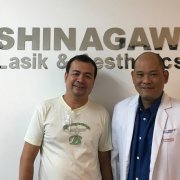Love At First Sight: The Role Of Eye Contact In Human Connection
Eye contact can do a lot of wonders. For some, that can even ignite some fireworks to the heart. Eyes can actually be the windows to the heart. It can most certainly open a lot of doors and possibilities, that’s why the term ‘Love at First Sight’ is coined in the first place.
Sometimes, communicating with your eyes can make all the difference when it comes to finding love. Studies show that non-verbal cues coming from the eyes can certainly influence behavior towards each other.
Prolonged eye contact can cause attraction
Eye contact can very well be a powerful stimulator of affection. In a study in which strangers of opposite genders were asked to gaze into each other’s eyes for two minutes found that this was enough in some cases to produce passionate feelings for each other.
It showed that the more dilated your pupils, the more attractive one is. The scientific finding is that our pupils dilate when focused on someone we find attractive.
Eye contact makes us feel good and connects us
Moreover, in-depth studies also show that prolonged eye contact has been thought to release phenylethylamine, a chemical responsible for feelings of attraction. It has also been thought to release oxytocin, the love chemical most closely associated with longer-term bonding and commitment.
Looking at each other’s eyes is a sign of love
Some scientists went as far as analyzing the visual pattern of college students looking at photos of attractive people. The study found that people tended to fixate on the faces of the images of people that elicited a feeling of romantic love and tended to fixate on the body of those that elicited sexual desire.
Eye contact indicates lasting love
One famous experiment conducted by Harvard psychologist Zick Rubin showed that couples who remain deeply in love after several years looked at each other 75% of the time while talking versus the average
30-60% of the time.
While many are thinking, flowers, chocolates, and dates this Valentine’s Day, you might want to focus on something else and gaze into you someone special’s eyes for a while. It certainly helps in building your connection further.
If you want to get the best out of your eyes, you should love them more. Shinagawa can help you with that. Just call our Patient Care Lines: (+632) 368 5238 l (+63) 917 862 7454 l (+63) 921 217 0517 to book a needed eye consultation.










